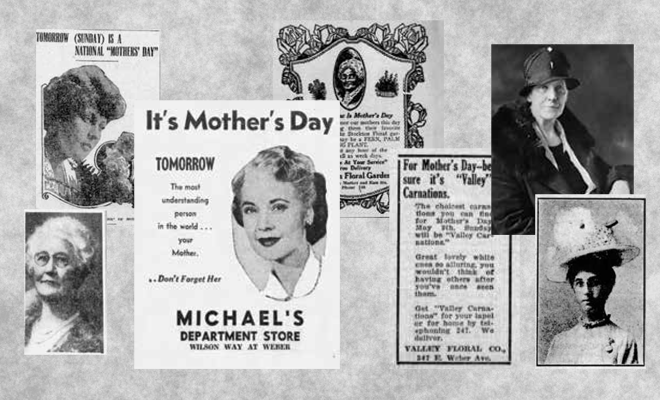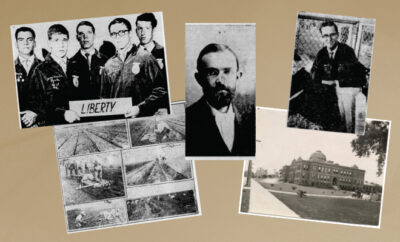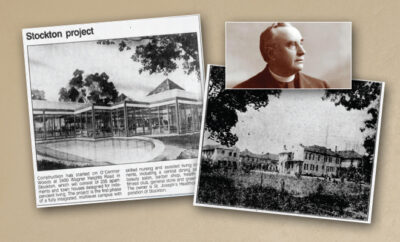
An Early History of Mother’s Day in San Joaquin County
Mother’s Day is a modern holiday. Conceived of in 1905 by Anna Jarvis in Grafton, West Virginia, the first Mother’s Day was held in 1907 as a worship service at the Andrews Methodist Episcopal Church in Grafton. Her mother, Ann Reeves Jarvis, had organized women’s brigades during the Civil War, and later in 1868 she had organized a Mothers Friendship Day to promote peace between former Union and Confederate families. After her passing in 1905 and inspired by a reading of Julia Ward Howe’s “Mother’s Day Proclamation of 1870,” Ann’s daughter Anna resolved to create an official memorial day to honor mothers. She received help from a Philadelphia store owner and began to promote the idea; she made major headway by 1908.
The concept spread quickly across the U.S. The first Mother’s Day in San Joaquin County was celebrated on May 9, 1909. The Christian Church of Stockton, a nondenominational church, was the first to adopt the holiday. Social organizations of the city arranged for white carnations and white flowers as the chief features of service decorations. At the Christian Church, Miss Etta Hoerl sang the solo “Tell Mother I’ll Be There.” While many churches participated, others were slow on the uptake. U.S. Congress was notably slow to adopt the day of celebration, with a rejected resolution for adoption in 1908. Members of Congress reportedly joked that they would also have to proclaim Mother-in-Law’s Day. Closer to home, numerous churches in Stockton chose to give sermons that day on “Christian Manhood.” A worthy topic, perhaps, though local reporters noted the choice as conspicuous considering the Mother’s Day movement.
Between 1909 and 1912, considerable organizing led to Mother’s Day being firmly established in local life. In 1909, Methodist and Presbyterian churches across the county began to hold sermons with a focus on appreciation for motherhood. Stockton, Lodi and Manteca churches followed suit. That year also saw the first Mother’s Day Sale advertised at The Arcade, a local department store in Stockton. Newspaper reports suggest that the sale was a wild success, and it was followed up by an even larger sale in 1910. By 1912, influential reporter, Philomathean, suffragette and first elected woman in San Joaquin County history, L. Clare Davis, formerly a skeptic of the event, was openly endorsing the holiday in the pages of The Stockton Record. The City of Stockton adopted the day as a local holiday that year. The federal government also caught on, and President Woodrow Wilson formally named the day a national holiday in 1914, and the celebration of motherhood became mainstream.
As the holiday became accepted, it was promptly commercialized. In 1915, no less than seven sale advertisements were published in The Stockton Record the day before Mother’s Day, and by 1919 they were everywhere, prompting a backlash from many of the religious institutions that had fought for the day to be recognized. Founder Anna Jarvis went so far as to advocate for the President to repeal the day! Despite the backlash, the holiday gained momentum and was firmly established. Many pointed to those protesting the day’s commercialization as “out of touch.” After all, what mother doesn’t want to be celebrated and honored?
Mother’s Day would evolve into the major celebration that we know today, leading to widespread displays of gratitude for our mothers and for motherhood. It’s worth taking time to remember the origins and evolution of this time-honored tradition.










